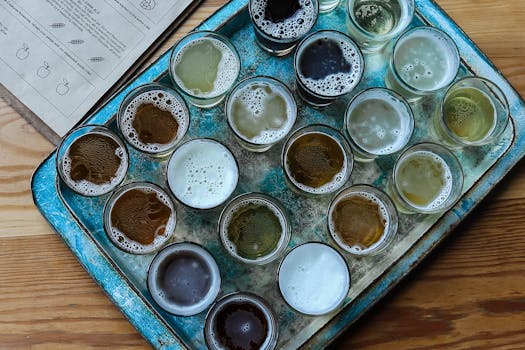Organizing a Blind Wine Tasting at Home
Wine tasting is an art that combines sensory evaluation with social enjoyment. Hosting a blind wine tasting at home can be a fun and educational experience for you and your friends. This article will guide you through the process of organizing a successful blind tasting, helping you identify various flavors and wine varieties while enhancing your appreciation for this timeless beverage.
Understanding Blind Tasting
Blind tasting involves sampling wines without knowing their identities. This method allows tasters to focus solely on the sensory characteristics of the wine, such as aroma, flavor, and texture, rather than being influenced by labels or preconceived notions. The goal is to identify the wine’s variety, region, and other attributes based solely on taste.
Why Host a Blind Tasting?
There are several reasons to host a blind wine tasting:
- Enhance Your Palate: Blind tastings encourage participants to pay closer attention to the flavors and aromas in each wine.
- Learn Together: Sharing the experience with friends fosters discussion and learning about different wine varieties.
- Fun and Engaging: The element of surprise adds excitement, making it a memorable social event.
Preparing for the Tasting
Preparation is key to a successful blind tasting. Here are the steps to follow:
Selecting the Wines
Choose a variety of wines that will challenge your palate. Consider including:
- Different Varietals: Select wines made from different grape varieties, such as Cabernet Sauvignon, Chardonnay, and Pinot Noir.
- Varied Regions: Include wines from different regions, such as Napa Valley, Bordeaux, and Tuscany.
- Price Points: Mix affordable wines with higher-end options to see if price influences perception.
Gathering Supplies
Ensure you have the following supplies for your tasting:
- Wine Glasses: Use clear, stemmed glasses to allow for proper evaluation of color and aroma.
- Spit Buckets: Provide buckets for participants who prefer not to swallow the wine.
- Notepads and Pens: Encourage participants to take notes on their impressions of each wine.
- Blindfolds or Bags: Use these to conceal the bottles and maintain the element of surprise.
Conducting the Tasting
Once you have your wines and supplies ready, it’s time to conduct the tasting. Follow these steps:
Setting the Scene
Create a comfortable atmosphere for your tasting. Dim the lights, play soft music, and arrange the seating to encourage conversation. Make sure to serve the wines at the appropriate temperatures:
- Red Wines: Serve at room temperature (around 60-65°F).
- White Wines: Chill to about 45-50°F.
Tasting Process
Guide your friends through the tasting process:
- Observe: Start by examining the wine’s color and clarity.
- Swirl: Swirl the wine in the glass to release its aromas.
- Smell: Take a moment to inhale the aromas and identify any scents.
- Taste: Take a sip, allowing the wine to coat your palate. Note the flavors and mouthfeel.
- Discuss: Share your thoughts and guesses about the wine’s variety and origin.
Identifying Flavors and Varieties
As you taste, consider the following flavor profiles commonly associated with different wine varieties:
- Cabernet Sauvignon: Dark fruits, tobacco, and oak.
- Chardonnay: Citrus, butter, and vanilla.
- Pinot Noir: Red fruits, earthiness, and floral notes.
Encourage participants to think critically about what they are tasting and to use descriptive language. This practice will enhance their ability to identify flavors in the future.
Conclusion
Hosting a blind wine tasting at home is an excellent way to deepen your understanding of wine while enjoying a fun evening with friends. By carefully selecting wines, preparing the right environment, and guiding your guests through the tasting process, you can create an engaging and educational experience. Remember, the key to a successful tasting is to focus on the sensory experience and enjoy the journey of discovery together. Cheers!
